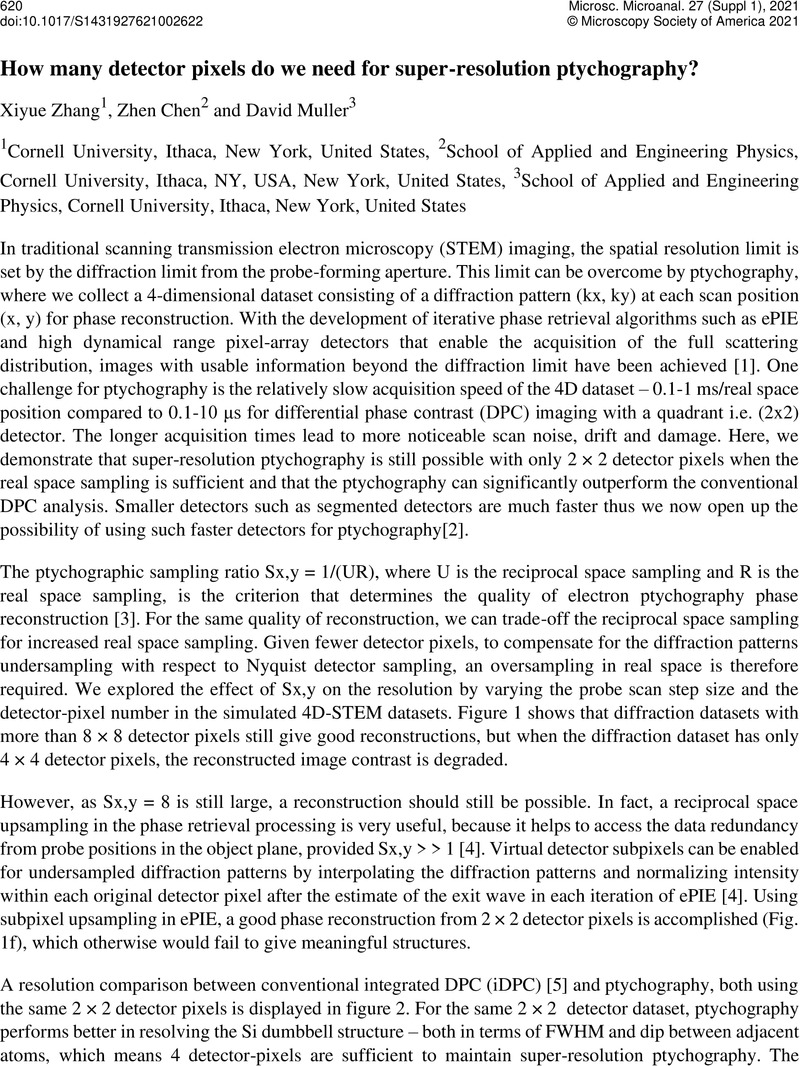Crossref Citations
This article has been cited by the following publications. This list is generated based on data provided by Crossref.
Cao, Michael C.
Chen, Zhen
Jiang, Yi
and
Han, Yimo
2022.
Automatic parameter selection for electron ptychography via Bayesian optimization.
Scientific Reports,
Vol. 12,
Issue. 1,
Zhang, Xiyue S
Chen, Zhen
Shao, Yu-Tsun
Jiang, Yi
Ray, Ariana
and
Muller, David A
2023.
Achieving Super Resolution Ptychography with a Quadrant Detector.
Microscopy and Microanalysis,
Vol. 29,
Issue. Supplement_1,
p.
291.
Robinson, Alex W.
Moshtaghpour, Amirafshar
Wells, Jack
Nicholls, Daniel
Chi, Miaofang
MacLaren, Ian
Kirkland, Angus I.
and
Browning, Nigel D.
2024.
High‐speed 4‐dimensional scanning transmission electron microscopy using compressive sensing techniques.
Journal of Microscopy,
Vol. 295,
Issue. 3,
p.
278.



